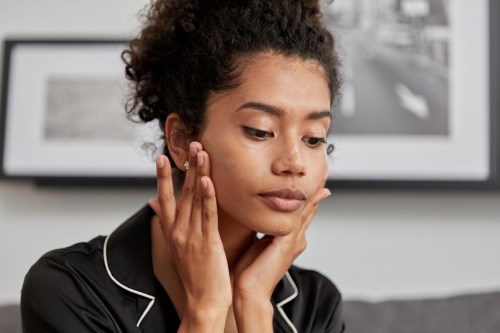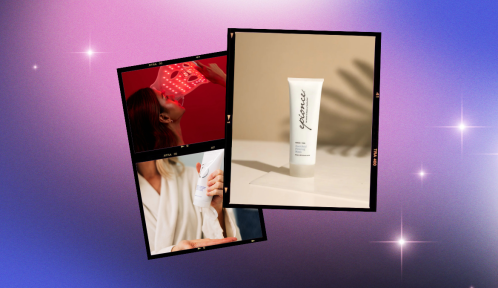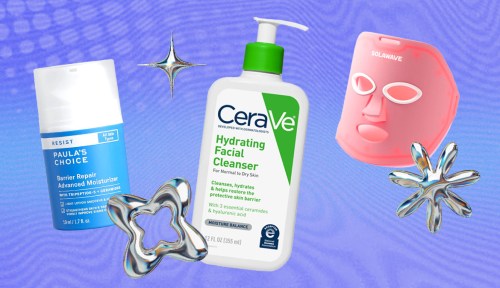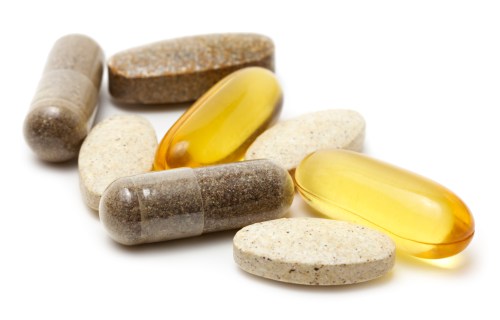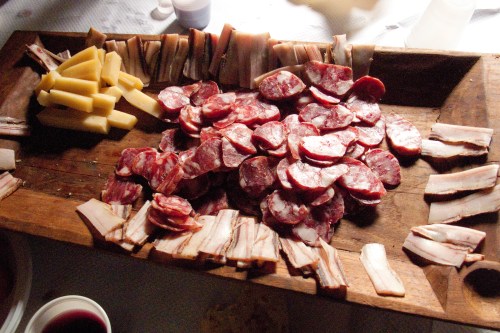Our editors independently select these products. Making a purchase through our links may earn Well+Good a commission
Hydroxy acids deserve a prime spot in every well-rounded skin-care routine. These chemical exfoliants work to melt dead skin cells off of the surface of your complexion and have a one-up on scrubs (aka physical exfoliants) for getting the job done. The benefits of using one run the gamut, and include de-gunking pores, evening out tone and texture, and leaving your skin smoother and more radiant overall—plus, removing that layer of dead skin cells helps the rest of your products penetrate your skin more deeply. There are two main players in the exfoliating acids family—alpha-hydroxy acids (AHA) and beta-hydroxy acids (BHA)—and deciding whether to use an AHA versus a BHA is wholly dependent on what you’re trying to achieve.
Experts in This Article
director of cosmetic and clinical research in dermatology and associate professor of dermatology at Mount Sinai Hospital
board-certified dermatologist
esthetician and the the director of education at Heyday Facial Bar
board-certified dermatologist at Riverchase Dermatology in Miami Beach, FL
To help you suss out which one is worth adding to your regimen, we asked skin pros to weigh in on who needs AHA exfoliants and who needs BHA exfoliants. Keep scrolling to find out what they had to say.
The difference between AHAs vs BHAs
AHAs and BHAs both work to unclog pores and improve skin texture by “dissolving the ‘glue’ that holds skin cells together,” says Shea Amiruddin, director of skin-care education for Heyday Skincare, but the main difference between the two is how deeply they’re able to penetrate your skin. “AHAs are water-soluble, and penetrate only the top layer of skin, which is called the epidermis,” says Rina Allawh, MD, FAAD, a Pennsylvania-based board-certified dermatologist. These acids are derived from plant-based sources, like sugar cane, milk, and grapes, which is why you’ll often see them referred to as “fruit acids.” BHAs, on the other hand, are oil-based, which means that they’re “lipid-soluble and are able to penetrate into the dermis through the oil-producing glands—known as the sebaceous glands—and are able to influence oil or sebum production,” she explains.
This, says Dr. Allawh, influences the impact that each has on your skin. Since AHAs are more targeted to the top layer of your skin, they’re helpful in treating superficial concerns like mild acne, fine lines and wrinkles, and hyperpigmentation. And because BHAs take things one step further by clearing away dead skin cells and unclogging pores, they’re your best bet for de-gunking your skin to get rid of deeper, more pronounced pimples.
Types of AHAs
1. Glycolic acid
This well-known AHA—which is derived from sugar—is the most hardcore of the exfoliating acids. Thanks to its small molecules, it’s able to easily permeate your skin to break the bonds that are holding dead cells to its surface. Generally, it’s used to improve the skin’s appearance and texture through exfoliation, while also reducing fine lines, hyperpigmentation, dark spots, and uneven skin tone.
2. Lactic acid
Often lauded as a gentle acid that still offers legit exfoliating benefits, this milk-derived acid is both effective and sensitive-skin friendly. It smooths and hydrates skin while diminishing fine lines and wrinkles and improving discoloration, all without irritating your complexion.
3. Mandelic acid
This gentle, almond-derived acid can help with improving skin texture. You’ll often find it combined with other acids to boost their exfoliating benefits.
4. Malic acid
Derived from apples, malic acid has larger molecules than the other AHAs of the bunch, which limits its penetration and makes it the gentlest option for your skin. It’s great for treating mild acne, melasma, fine lines, and a dull complexion. For those with sensitive skin, this is a solid option.
5. Citric acid
A derivative of citrus fruits, citric acid is a mild AHA that helps to balance skin’s pH while softening and brightening your complexion.
This Parisian Skincare Brand Is Launching in the United States for the First Time—Here’s What a Derm Wants You to Know
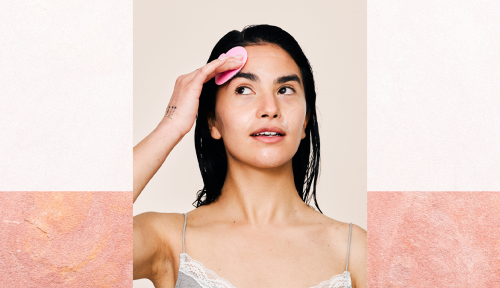
We’re Calling It: Cleansing Balms Are the Face Wash of the Future—Here Are 3 to Add to Your Cart
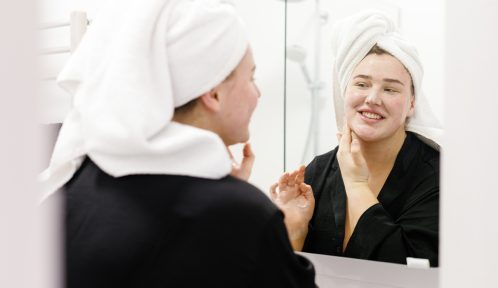
This Is the One Product That Scarlett Johansson Always Keeps in Her Purse and on Her Bedside Table
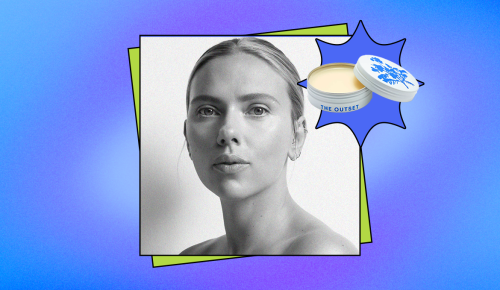
Types of BHAs
1. Salicylic acid
Salicylic acid—which you might recognize from the labels of your acne products—is the most well-known of the beta-hydroxy acids. “Salicylic acid is a go-to ingredient in treating acne because it helps remove excess oil from the skin and dries out the pimple,” Joshua Zeichner, MD, a board-certified dermatologist based in New York City, previously told Well+Good. “It can be used in traditional acne or even to address red, angry pimples that develop under your face mask.” It acts as a keratolytic, which means that it opens up your pores, and cleans them from the inside out, while also encouraging skin shedding from the surface of your complexion.
Benefits of AHAs
1. Brightens skin
Think of AHAs as your surface-level superstars. In general, they’re best for fending off issues that only affect the top layer of your skin, which means that they’re one of the best brightening ingredients. Since dead skin cells are the number one culprit for making skin look dull, melting them away with any AHA will help leave your complexion looking radiant.
2. Fights fine lines and wrinkles
AHAs—particularly glycolic and citric acids—are known to boost your natural collagen production, which makes them effective for plumping skin and diminishing the appearance of fine lines and wrinkles. This class of active ingredients has also been shown to increase elasticity, giving what one study refers to as a “de-aging” effect overall. “If a patient is prone to dry skin or is battling fine lines and wrinkles, something like lactic acid can help those who want a gentler alpha-hydroxy acid,” says Amiruddin.
3. Evens out skin tone
Since exfoliating acids help slough off the top layer of skin, they can be effective for evening out pigmentation issues, like acne scarring and sunspots. Glycolic acid has the most scientific backing for its ability to even out discoloration, but citric and malic acids are also gentle and effective options.
Benefits of BHAs
1. Treats acne
It’s worth noting that BHAs offer nearly all of the same benefits as their AHA cousins (and may even be better for treating discoloration in certain skin tones), but go above and beyond in the treatment of acne. “BHAs have the ability to penetrate and exfoliate into the follicle, which makes them great for the treatment of breakouts and targeting congestion,” says Amiruddin. She adds that it also acts as an anti-inflammatory and analgesic, which means that it brings down redness and offers pain-relieving effects.
How to choose between AHAs vs BHAs
Deciding between an AHA vs BHA really comes down to what you’re looking to target. “If you suffer from hyperpigmentation and/or are interested in targeting fine wrinkles, an AHA may be more beneficial,” says Stacy Chimento, MD, a board-certified dermatologist based in Miami. “And if you’re looking for a more effective acne treatment and suffer from oily skin, choosing a BHA will be more beneficial.”
According to a 2009 review, you’ll get the biggest benefit from using both of these ingredients together—so long as you’re not overdoing it and your skin can tolerate the combo (your skin will become dry and flaky or red and irritated if you’re overdoing it). Start with using them a couple of times a week, allowing your skin to get used to them, and then increase frequency from there if your skin can tolerate it.
Some products, like Farmacy Honeymoon Glow AHA Resurfacing Night Serum ($58), combine the two into a single formula, which makes it easy to get your daily dose of each, but may be too intense for certain skin types. You can also choose to alternate between an AHA product, like The Inkey List Glycolic Acid Exfoliating Toner ($11), and a BHA product, like Paula’s Choice Skin Perfecting 2% BHA Liquid Exfoliant ($30) on different nights. Be sure to pay close attention to how your skin responds to avoid over-exfoliating, and proceed with caution when adding any acid into your routine if you’ve got sensitive skin.
Got more questions on exfoliating acids? Check out the video below.
Want even more beauty intel from our editors? Join Well+Good’s Fine Print Facebook group (and follow us on Instagram) for must-know tips and tricks.
Sign Up for Our Daily Newsletter
Get all the latest in wellness, trends, food, fitness, beauty, and more delivered right to your inbox.
Got it, you've been added to our email list.
